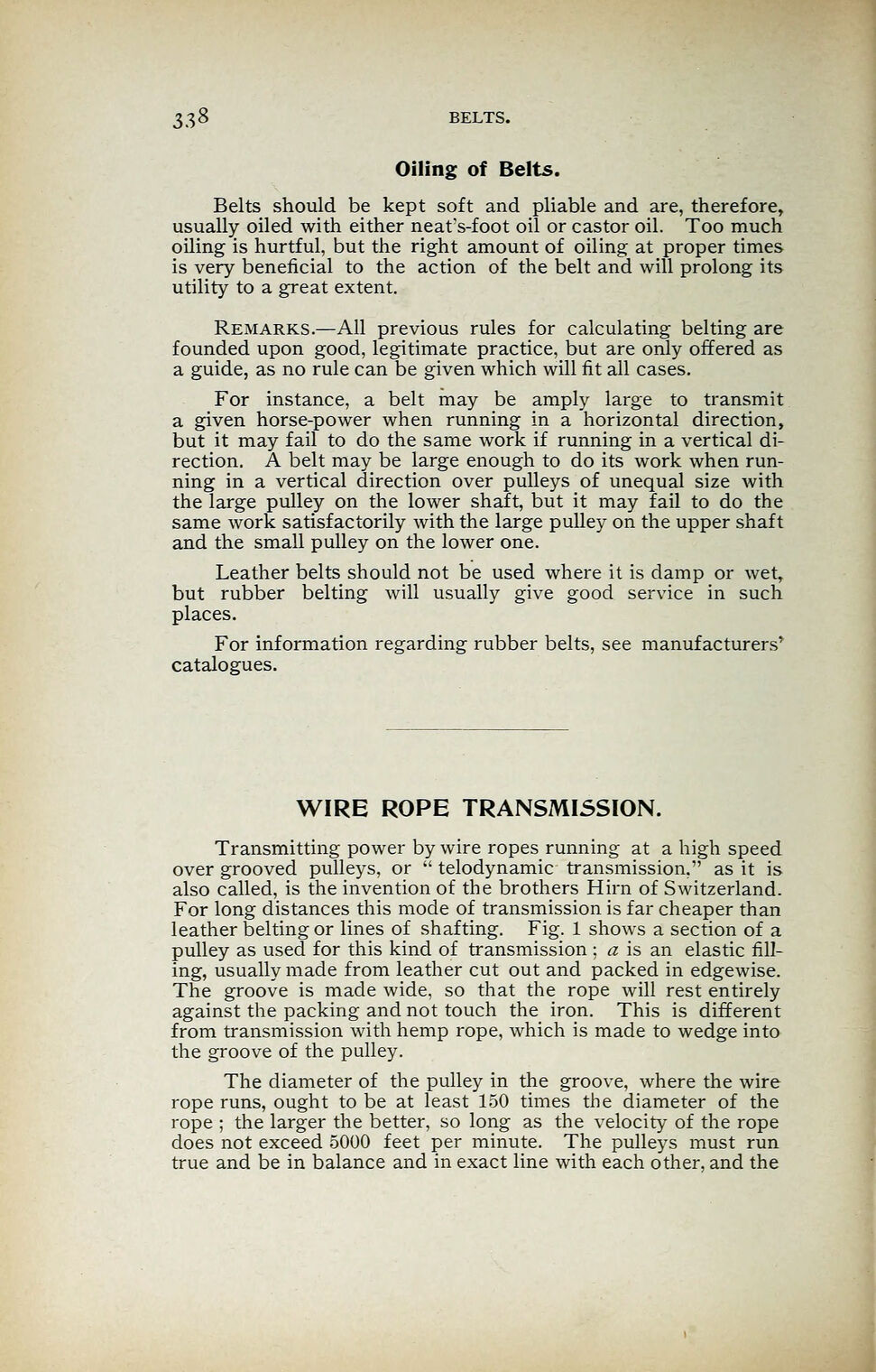
Full resolution (JPEG) - On this page / på denna sida - Belts - Oiling of belts - Rope Transmission

<< prev. page << föreg. sida << >> nästa sida >> next page >>
Below is the raw OCR text
from the above scanned image.
Do you see an error? Proofread the page now!
Här nedan syns maskintolkade texten från faksimilbilden ovan.
Ser du något fel? Korrekturläs sidan nu!
This page has never been proofread. / Denna sida har aldrig korrekturlästs.
338 BELTS.
Oiling of Belts.
Belts should be kept soft and pliable and are, therefore,
usually oiled with either neat’s-foot oil or castor oil. Too much
oiling is hurtful, but the right amount of oiling at proper times
is very beneficial to the action of the belt and will prolong its
utility to a great extent.
Remarks.—All previous rules for calculating belting are
founded upon good, legitimate practice, but are only offered as
a guide, as no rule can be given which will fit all cases.
For instance, a belt may be amply large to transmit
a given horse-power when running in a horizontal direction,
but it may fail to do the same work if running in a vertical di-
rection. A belt may be large enough to do its work when run-
ning in a vertical direction over pulleys of unequal size with
the large pulley on the lower shaft, but it may fail to do the
same work satisfactorily with the large pulley on the upper shaft
and the small pulley on the lower one.
Leather belts should not be used where it is damp or wet,
but rubber belting will usually give good service in such
places.
For information regarding rubber belts, see manufacturers’
catalogues.
WIRE ROPE TRANSMISSION.
Transmitting power by wire ropes running at a high speed
over grooved pulleys, or " telodynamic transmission," as it is
also called, is the invention of the brothers Hirn of Switzerland.
For long distances this mode of transmission is far cheaper than
leather belting or lines of shafting. Fig. 1 shows a section of a
pulley as used for this kind of transmission ; a is an elastic fill-
ing, usually made from leather cut out and packed in edgewise.
The groove is made wide, so that the rope will rest entirely
against the packing and not touch the iron. This is different
from transmission with hemp rope, which is made to wedge into
the groove of the pulley.
The diameter of the pulley in the groove, where the wire
rope runs, ought to be at least 150 times the diameter of the
rope ; the larger the better, so long as the velocity of the rope
does not exceed 5000 feet per minute. The pulleys must run
true and be in balance and in exact line with each other, and the
<< prev. page << föreg. sida << >> nästa sida >> next page >>